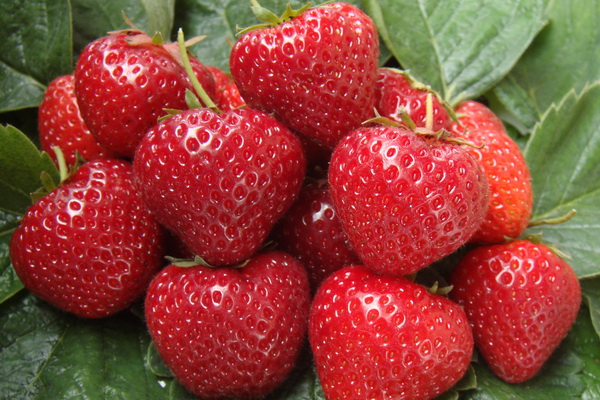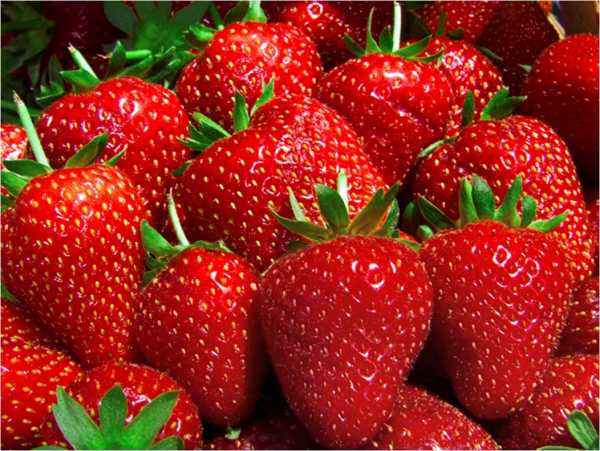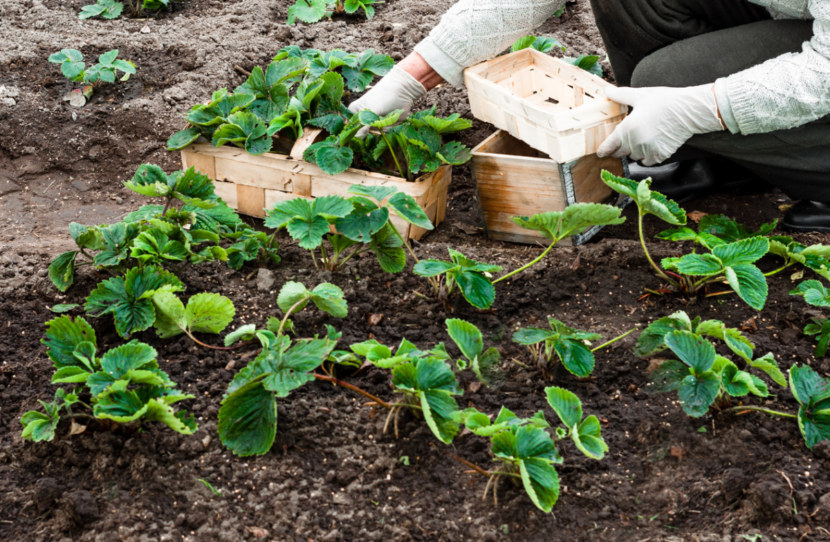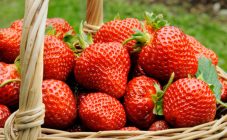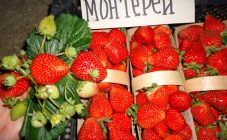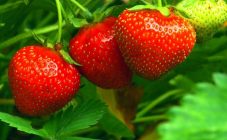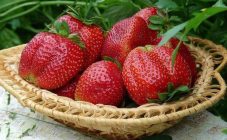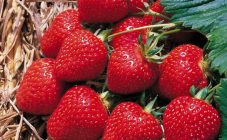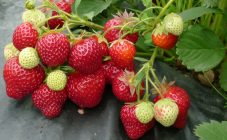Content:
The Selva strawberry was obtained by American breeders as a result of crossing 3 species: Pajero, Tufts and Brighton. Repaired grade NSD - neutral daylight hours. It has earned popularity due to the constant fruiting and pleasant taste of the fruit with a barely noticeable acidity.
Strawberry Selva: description
The bred variety pleasantly combines the signs of remontance and early ripening of berries.
You can try the first fruits at the end of May. This feature also makes the variety very popular. However, you should know that the Sylvia strawberry variety belongs to plants with a neutral daylight. What does it mean? If strawberry varieties DSV (long daylight hours) bear fruit for 3 years without reducing the quality of the crop, then strawberry varieties NSD bear fruit well within one year after planting, then the yield decreases markedly. This obliges the plantings to be rejuvenated annually.
However, the variety has its own advantages. From the description of the Sylvia strawberry variety and judging by the gardeners' reviews, you can find out that buds are laid throughout the growing season, so you can harvest throughout the season. At the same time, there is a constant build-up of green mass, a mustache is formed, more and more flowers appear.
When grown outdoors, you can observe almost continuous fruiting: up to 3-4 waves for the entire season. If at the beginning of June one can observe uncooked ripening of berries, then by the middle of summer the fruits ripen almost simultaneously. Harvesting is possible until the end of September, and in good weather conditions even before the beginning of October.
During the growing season, berries ripen not only on mother plants, but also on daughter rosettes.
Characteristics and description of strawberry Selva
Before buying garden strawberry seedlings, you need to study the characteristics in detail in order to know what is required for this particular variety and how it will delight you in the future.
Plant parameters
The strawberry bush of this variety has a broad-leaved structure, spreading. The flower stalks rise high above the plant, which promotes better berry ripening and facilitates harvesting. Many fruits are formed on one stalk. Depending on weather conditions, during the growing season, one bush can be harvested up to 4-5 times.
The variety is characterized by early fruiting. The taste of the first berries can be tasted in late May - early June. After fruiting, a new wave sets in - the bushes are again covered with flowers, an ovary is formed, the berries ripen again. During the growing season, strawberry bushes give a lot of mustache. The increased formation of small outlets facilitates the process of plant rejuvenation.
Fruit characteristics
Fruiting of the dessert variety continues throughout the season.Selva strawberries can be considered a highly productive crop, since in the first wave of fruiting, berries of rather large sizes are harvested, and with subsequent ripening, the berries are noticeably smaller, but their number increases, because fruiting occurs not only on the mother plant, but also on young rosettes.
The berries are pink and red, the seeds are small, and the strawberries taste sweet and sour. The fruits have good transportability, which allows them to be grown commercially and transported over long distances.
Frost resistance
The variety has a high frost resistance, it can even withstand severe winters. But you should be aware that strawberry bushes cannot tolerate prolonged thaw and stagnation of water.
When grown in areas with a warm climate, strawberry bushes can simply be covered with straw, non-woven fabric or spruce branches. In cold regions good shelter is needed. First you need to mulch the plantings, and then cover the bushes with a layer of peat. Before wintering, the plant is hardened. Before you cover it, you need to let the strawberry bushes get a little frost so that they get a little used to the cold.
Yield
Harvesting takes place throughout the season. The weight of one berry can reach 55 grams. They themselves are shiny, cone-shaped. During the season, you can harvest a large crop, which is consistently harvested for 2 years.
Pest and disease resistance
The high resistance of the variety to diseases and pests is a good feature of the berry crop. Selva is not susceptible to spotting, gray rot, so the leaf plates remain green, without damage, until the end of the season.
In the process of growing, it is important to observe the plantings in order to detect some pest in time: raspberry-strawberry weevil, strawberry mite, nettle-leaf weevil, strawberry nematode and start a fight with it.
Infusions of wormwood, laundry soap and tobacco, garlic infusion have proven themselves well. You can plant marigolds or calendula in strawberry beds. Flowers repel pests with their smell.
Agrotechnical methods of growing strawberries Selva
Planting strawberry bushes must be carried out in well-lit areas, since the ripening of berries continues throughout the season. In addition, the site must be protected from gusty winds and located high in order to exclude waterlogging of the area, otherwise the root system will die.
Features of planting strawberries Selva
If the summer cottage is located in a hilly area, it is better to form a strawberry bed on the west or south side. This location will promote better growth, fruiting and ripening of berries.
The soil should be slightly acidic or neutral. Strawberry bushes bear fruit well on sandy loam and loamy soils. When plowing the land, organic fertilizers must be applied to the soil. It is recommended to add potassium sulfate - 30 grams and superphosphate in the amount of 50 grams per 1 m2.
When planting, you need to follow the scheme: the distance in the row spacing should not be less than 60 cm, and between the bushes - 25 cm. To prevent weeds and preserve soil moisture, it is recommended to mulch. Mulch prevents the berries from rotting, as they will not touch the ground during ripening.
After planting, it is recommended to water the bushes abundantly so that the root system interacts with the soil. New plantings are watered daily for a week, until the young plants are fully established.
For propagation of strawberries, choose a healthy and lush mother plant with many mustaches. It is this planting material that will give a good harvest. During the season, more and more mustaches appear. If they are not needed, they should be removed. Growing up, they reduce the nutritional value of the soil and lead to a decrease in yield.
Watering
Selva strawberries are very demanding on soil moisture. If you overlook and dry out the land, you can lose almost the entire crop. Therefore, in dry times, it needs to be watered daily. Watering is also required during the period of budding, flowering and ripening of berries.
If it is not possible to buy a drip irrigation system, you can use plastic bottles from which you need to cut off the bottom. This design is installed near each bush with the neck down. Water is poured into the bottle and the strawberry bush takes as much water as it needs.
Advantages and disadvantages of the variety
Like every variety, the Selva strawberry also has its advantages and disadvantages.
The advantages of the variety:
- stable harvest throughout the season;
- good appearance of berries;
- 3 harvesting waves during the growing season;
- good transportability;
- resistance to diseases and pests;
- frost resistance;
- large fruits weighing up to 50 g.
However, along with the advantages, there are also disadvantages. There are not many of them, but they are. The main disadvantage of the variety is the rapid degeneration of plantations. A significant drawback is covered by rapid rejuvenation, which occurs due to the high formation of whiskers and their fruiting in the first season. Whiskers begin to bear fruit immediately after rooting.
When purchasing a variety, it is necessary to fully study its characteristics in order to further know how to care for it and what the yield will be, subject to agronomic practices.
